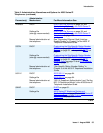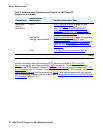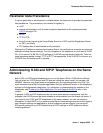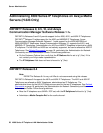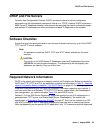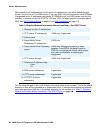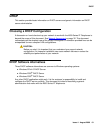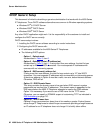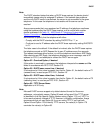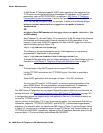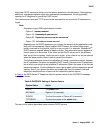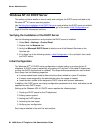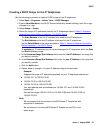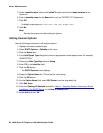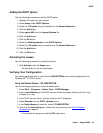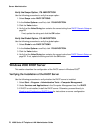
DHCP
Issue 4 August 2006 63
Note:
Note: The DHCP standard states that when a DHCP lease expires, the device should
immediately cease using its assigned IP address. If the network has problems
and the only DHCP server is centralized, the server is not accessible to the given
telephone. In this case the telephone is not usable until the server can be
reached.
Avaya recommends that, once assigned an IP address, the telephone continues
using that address after the DHCP lease expires, until a conflict with another
device is detected. As Table 10:
4600 Series IP Telephone Customizable
System Parameters indicates, the system parameter DHCPSTD allows an
administrator to specify that the telephone will either:
- Comply with the DHCP standard by setting DHCPSTD to “1”, or
- Continue to use its IP address after the DHCP lease expires by setting DHCPSTD
to “0.”
The latter case is the default. If the default is invoked, after the DHCP lease expires
the telephone sends an ARP Request for its own IP address every five seconds.
The request continues either forever, or until the telephone receives an ARP Reply.
After receiving an ARP Reply, the telephone displays an error message, sets its IP
address to 0.0.0.0, and attempts to contact the DHCP server again.
- Option 52 - Overload Option, if desired.
If this option is received in a message, the telephone interprets the sname and file
fields in accordance with RFC 2132, Section 9.3.
- Option 58 - DHCP lease renew time, if desired.
If not received or if this value is greater than that for Option 51, the default value of T1
(renewal timer) is used as per RFC 2131, Section 4.5.
- Option 59 - DHCP lease rebind time, if desired.
If not received or if this value is greater than that for Option 51, the default value of T2
(rebinding timer) is used as per RFC 2131, Section 4.5.
- Option 66 - TFTP Server Name.
Applicable to H.323 only.
Note:
Note: Microsoft DHCP servers support only dotted-decimal format for file server
addresses, not symbolic names. Option 66 need not be used if the TFTP server
is identified in the Site Specific Option Number string (Option 176), or if HTTP is
to be used exclusively instead of TFTP. However, to simplify configuration, Avaya
recommends that you use Option 66 if you are using TFTP. If you use both
Option 66 and Option 176 to identify TFTP servers, the value(s) in Option 176
overrides the value(s) in Option 66.



